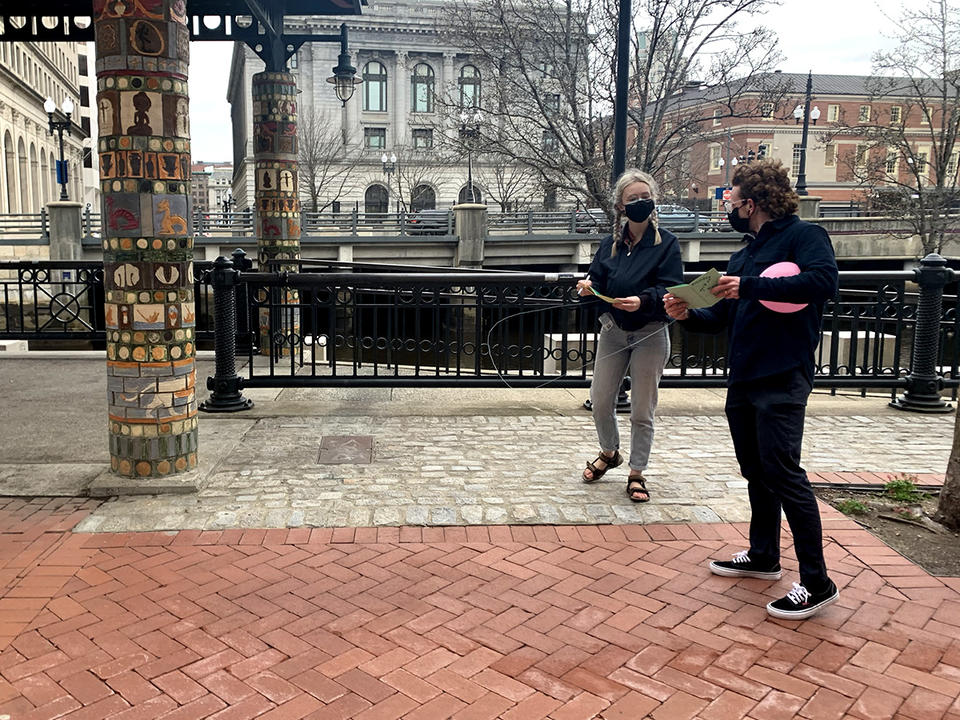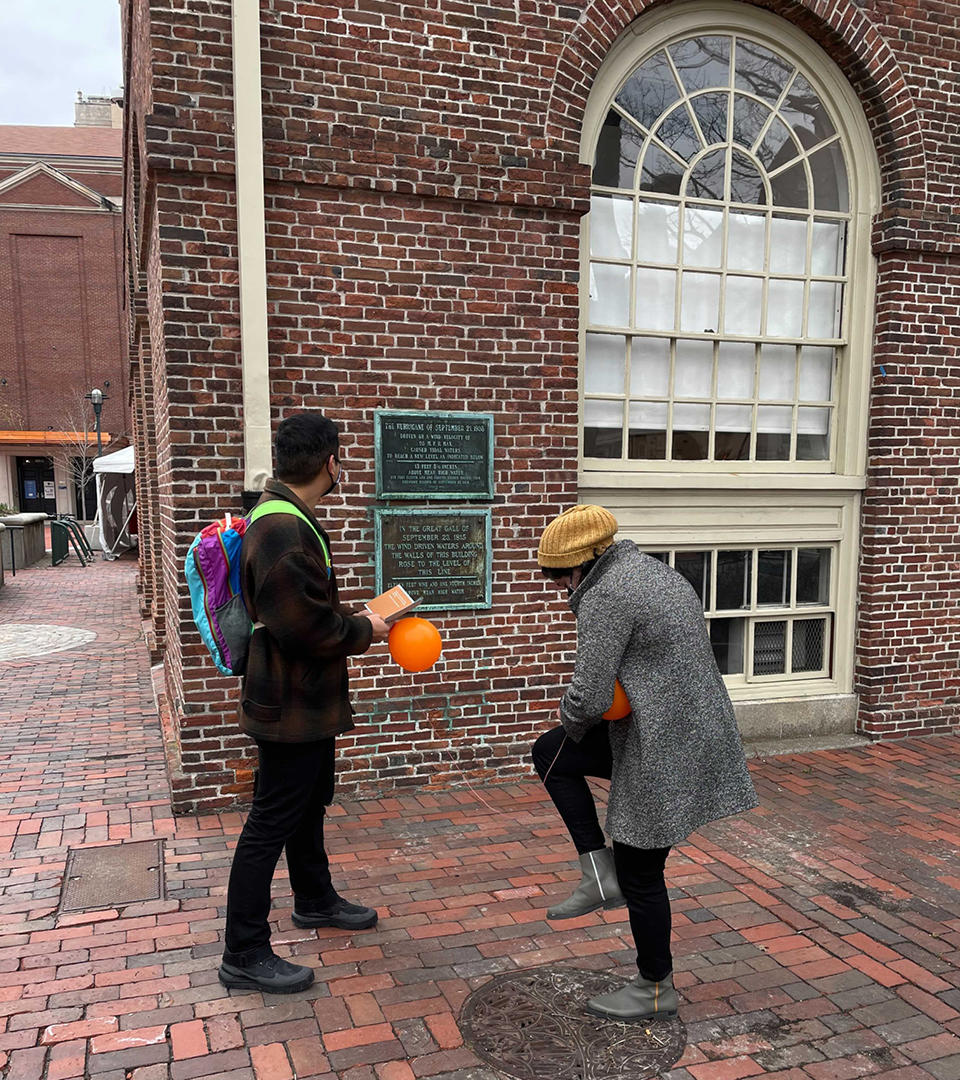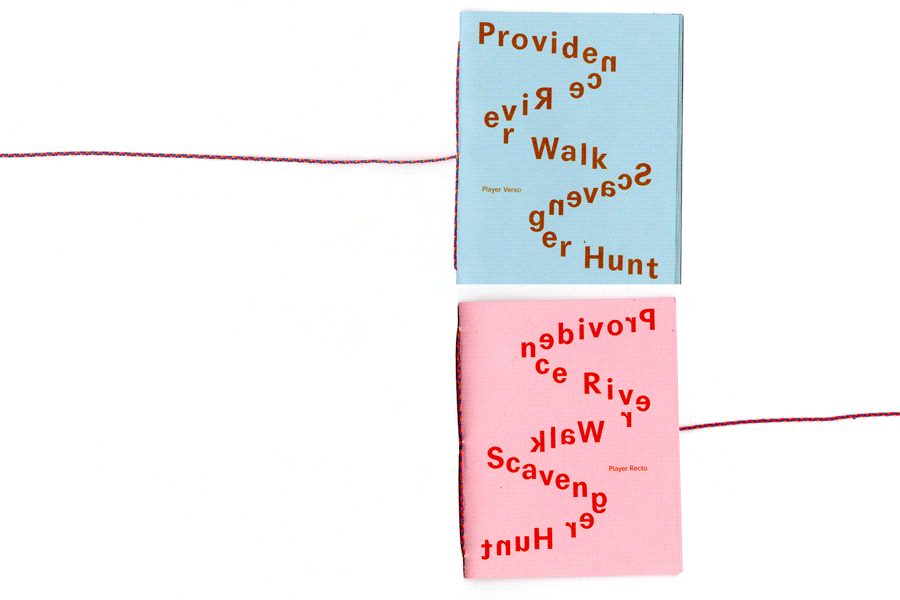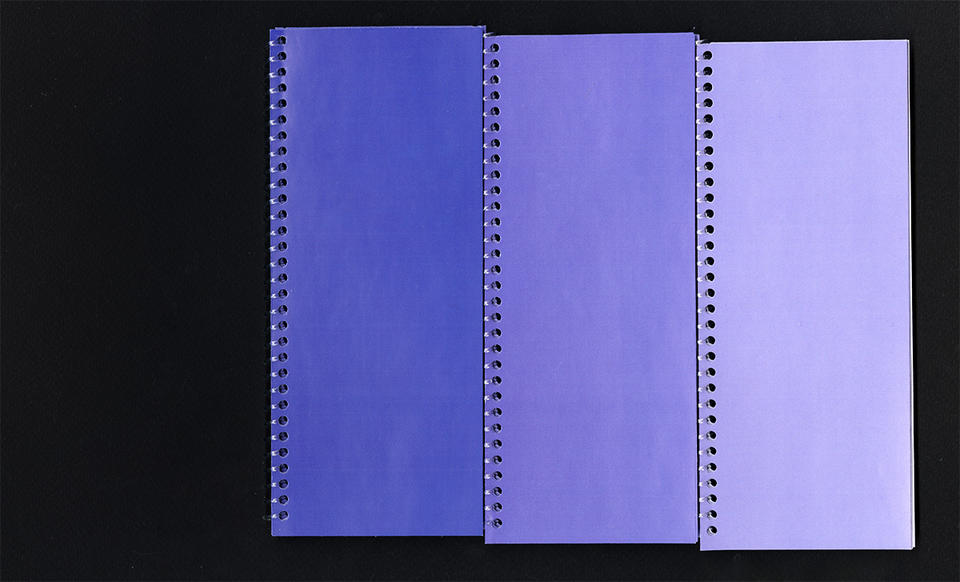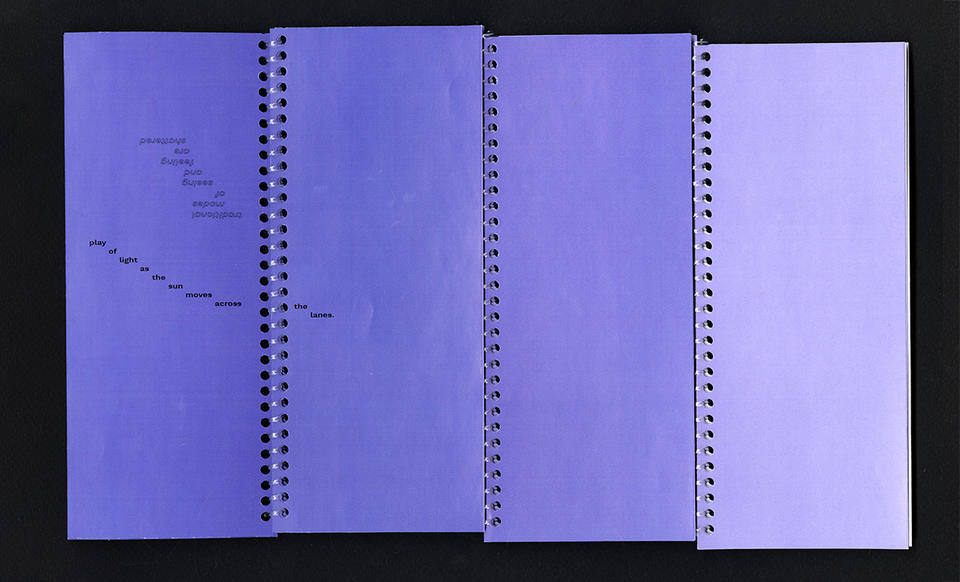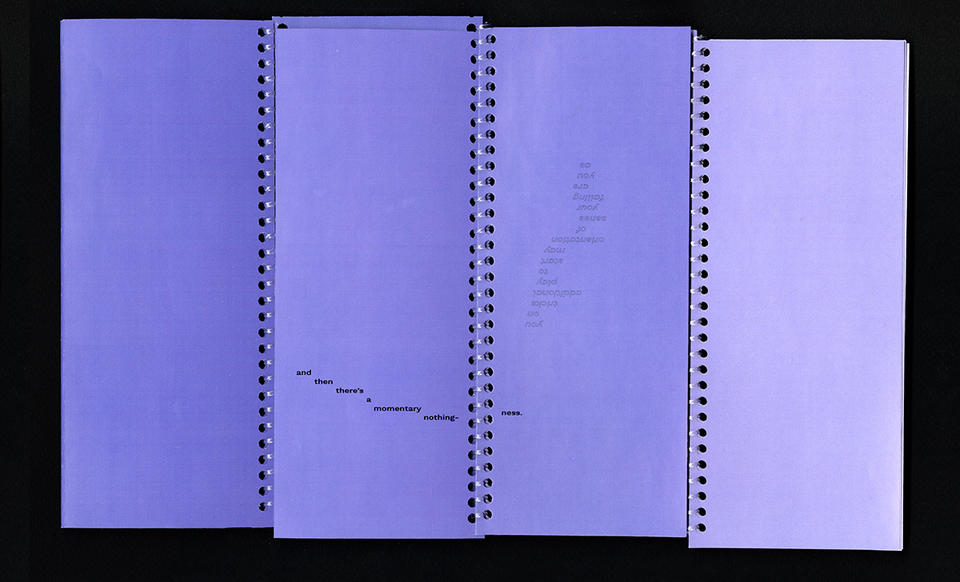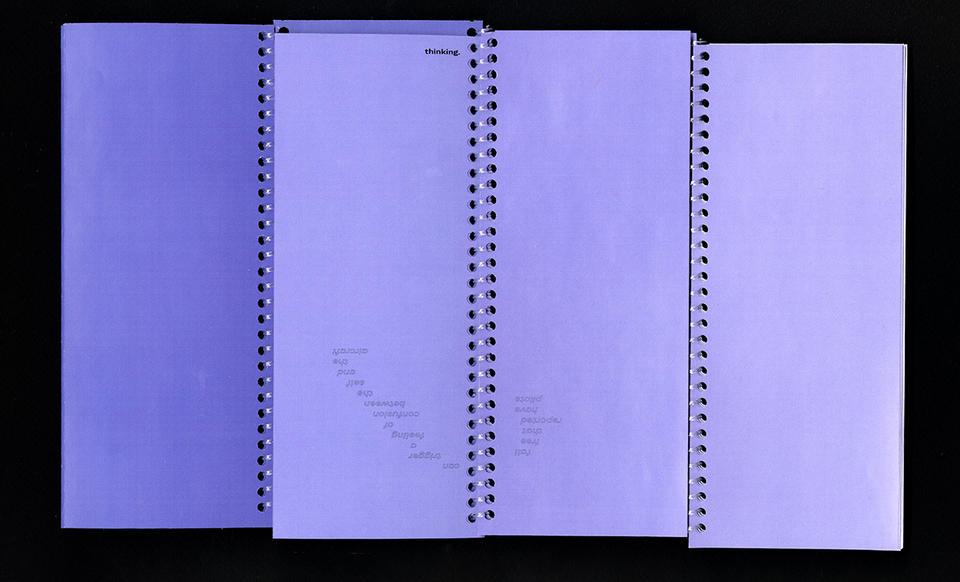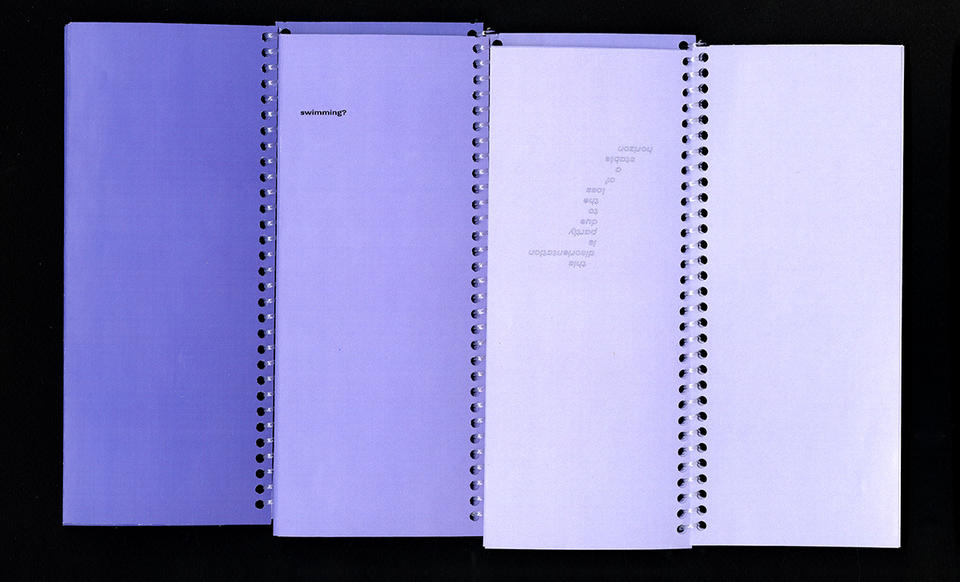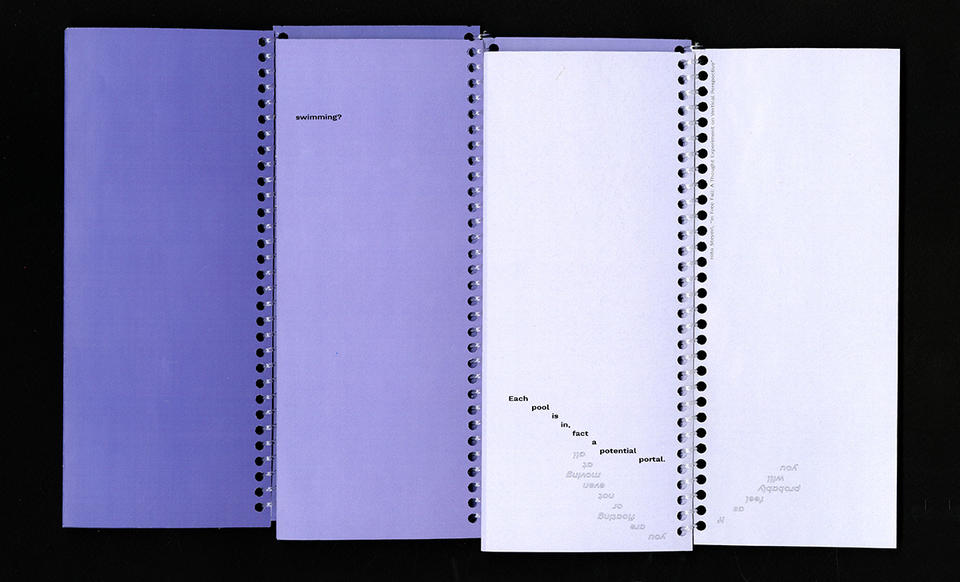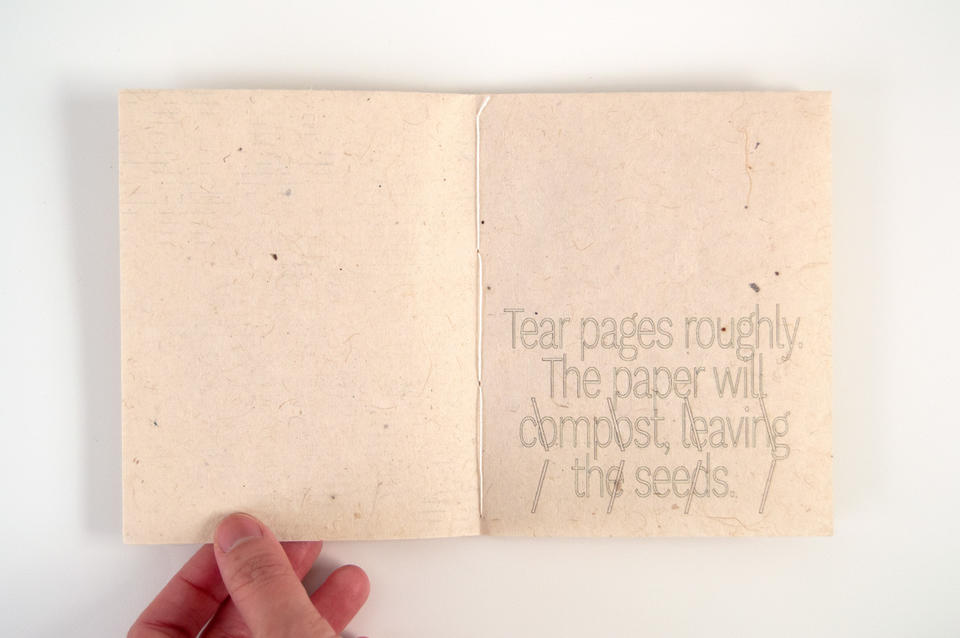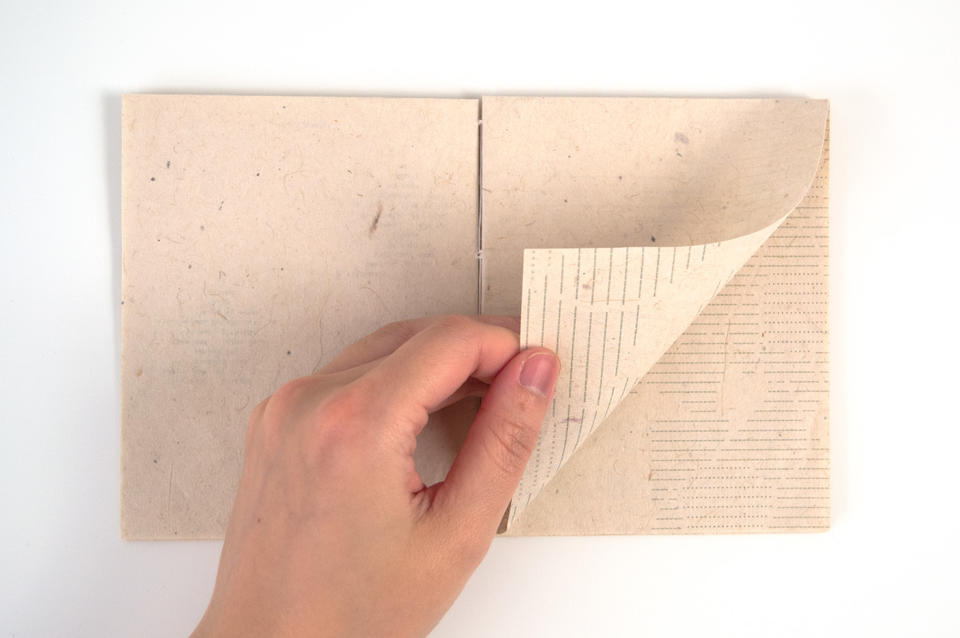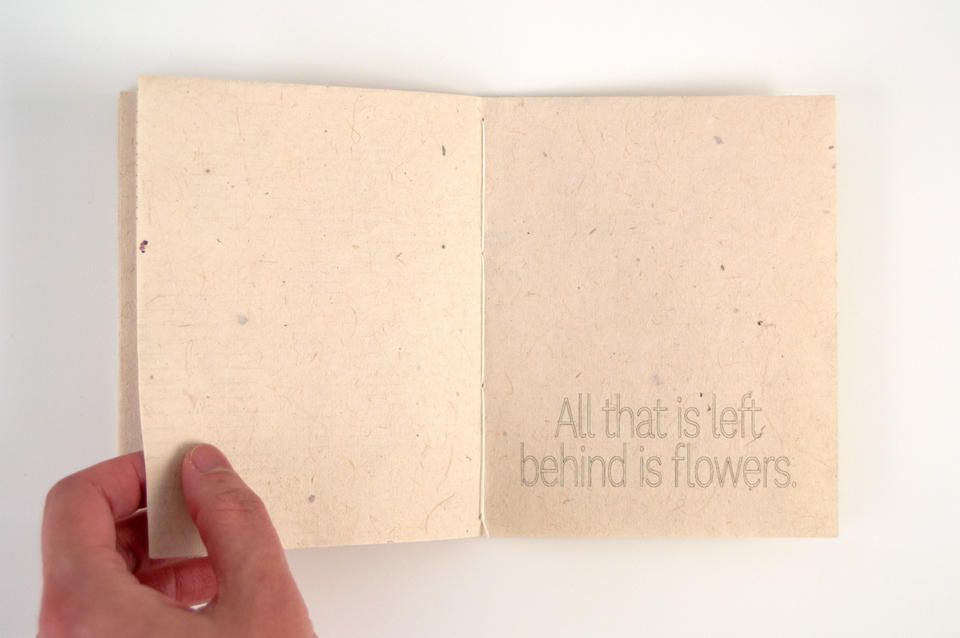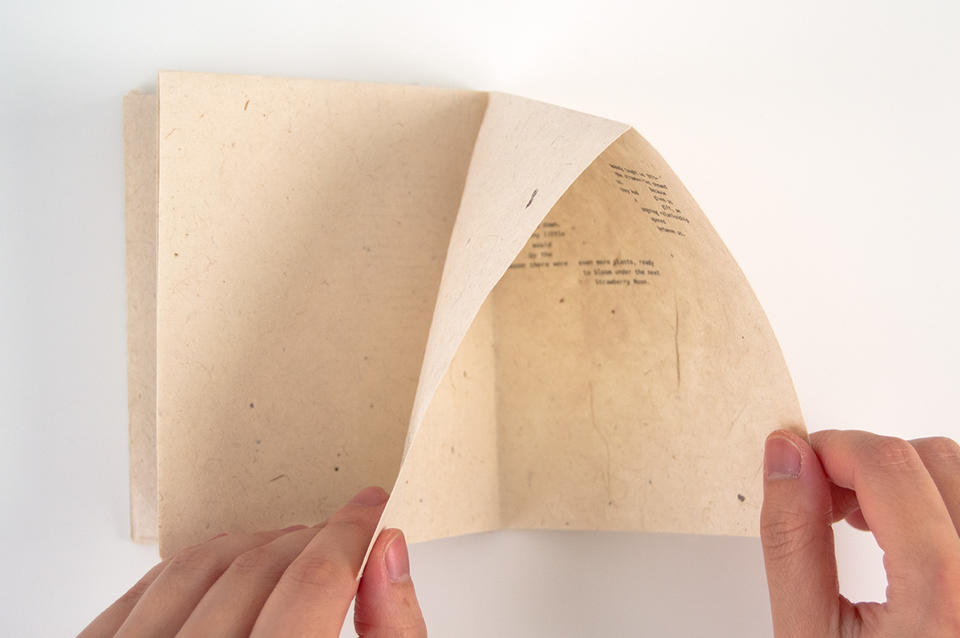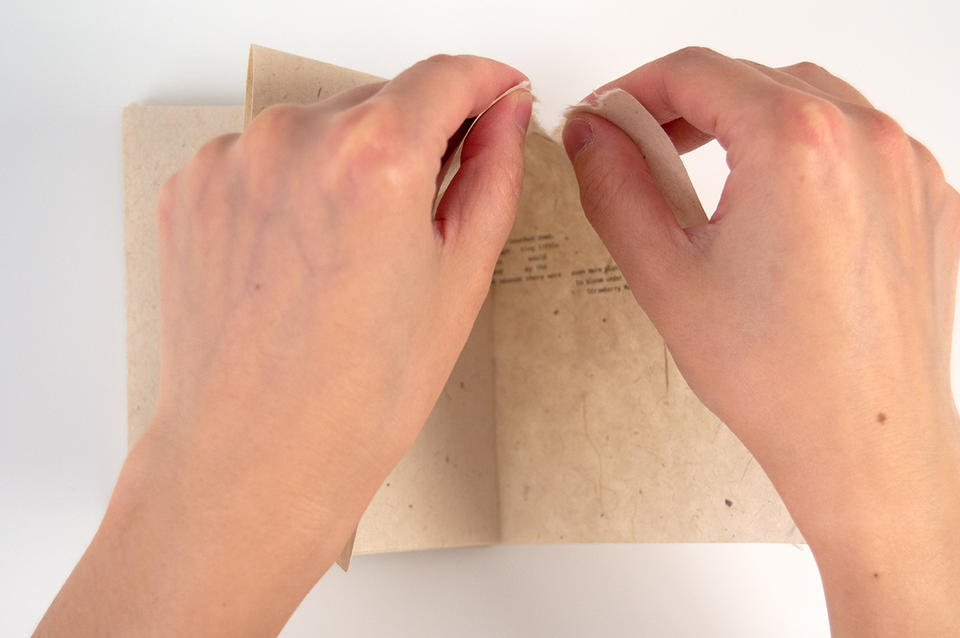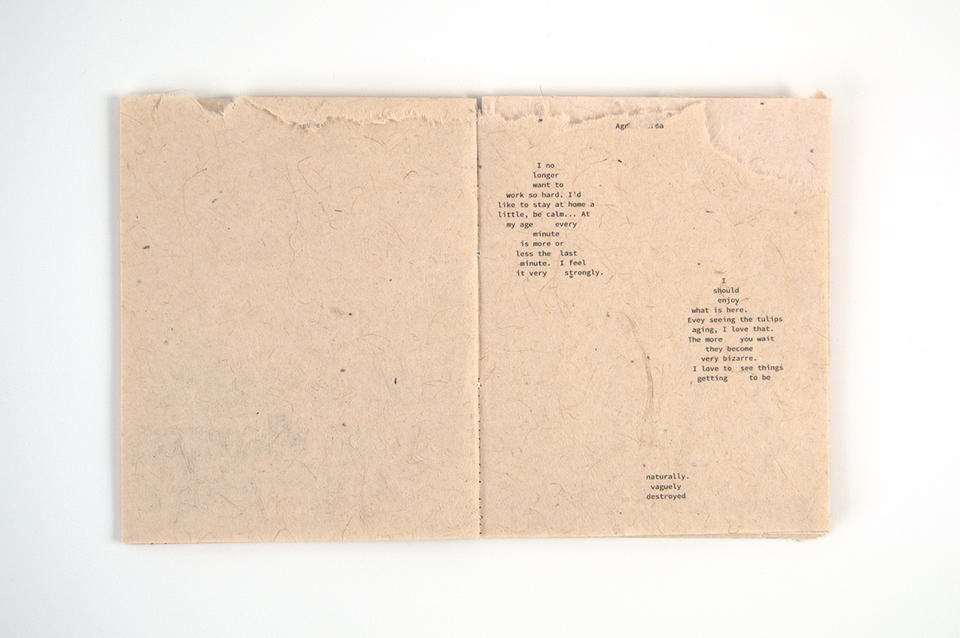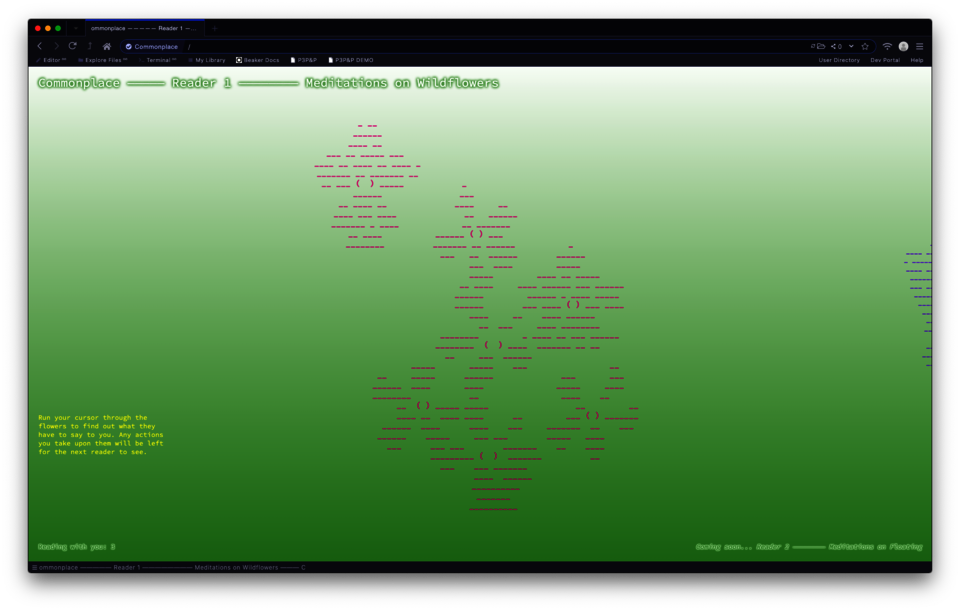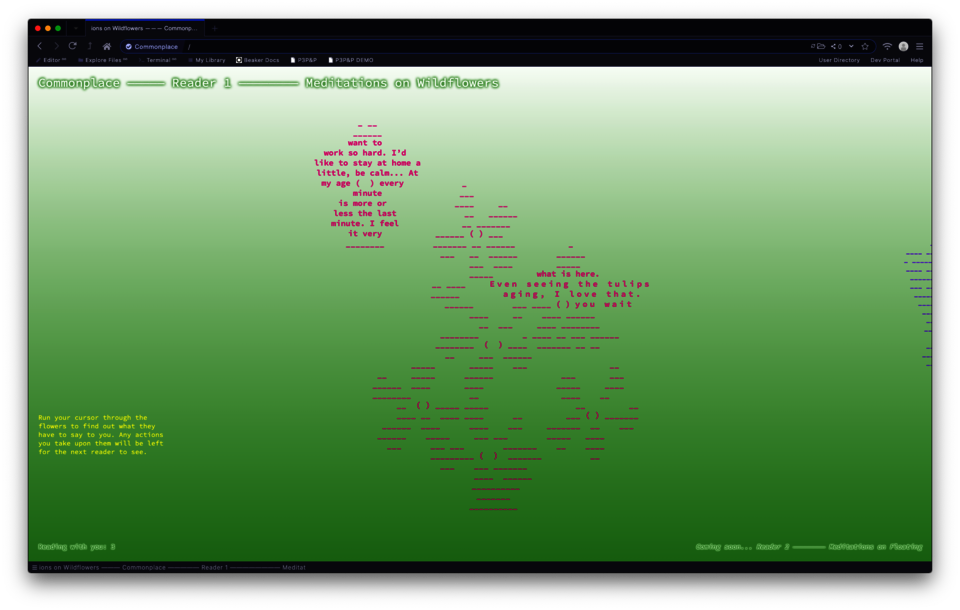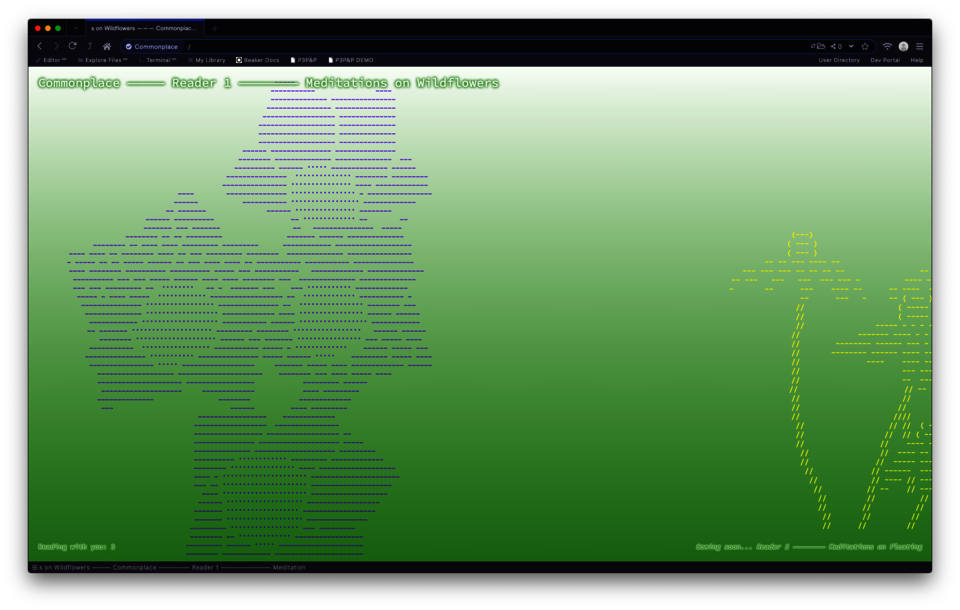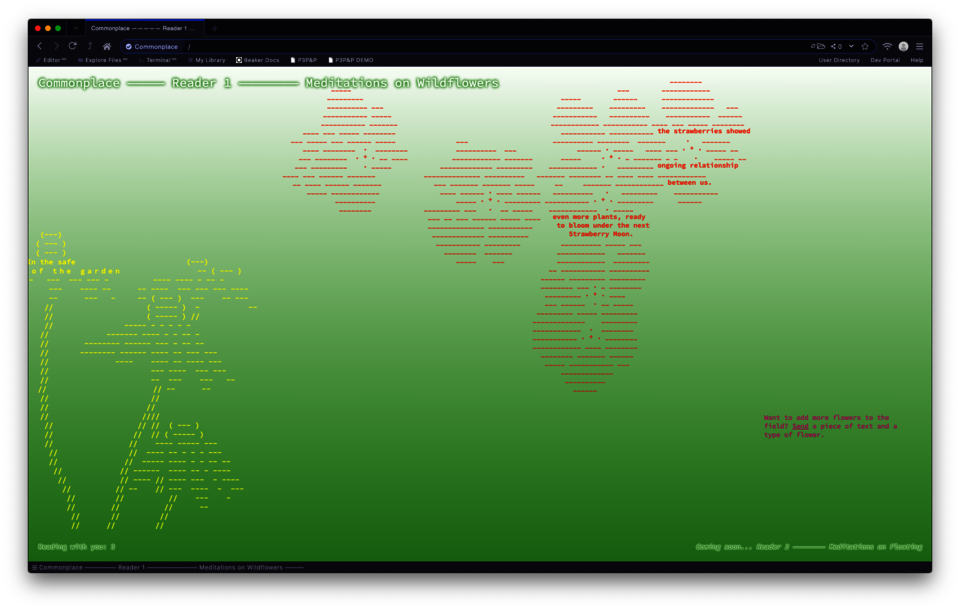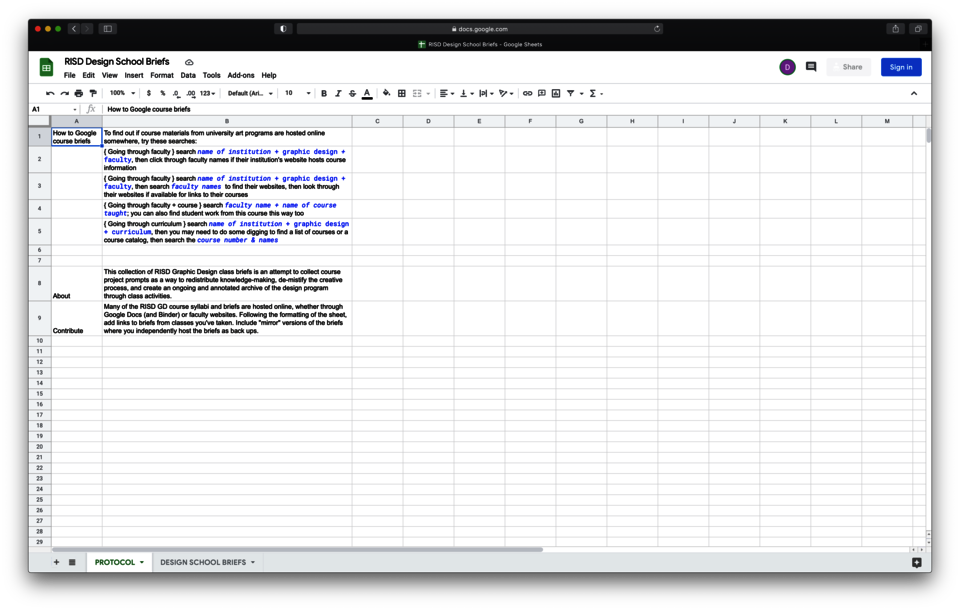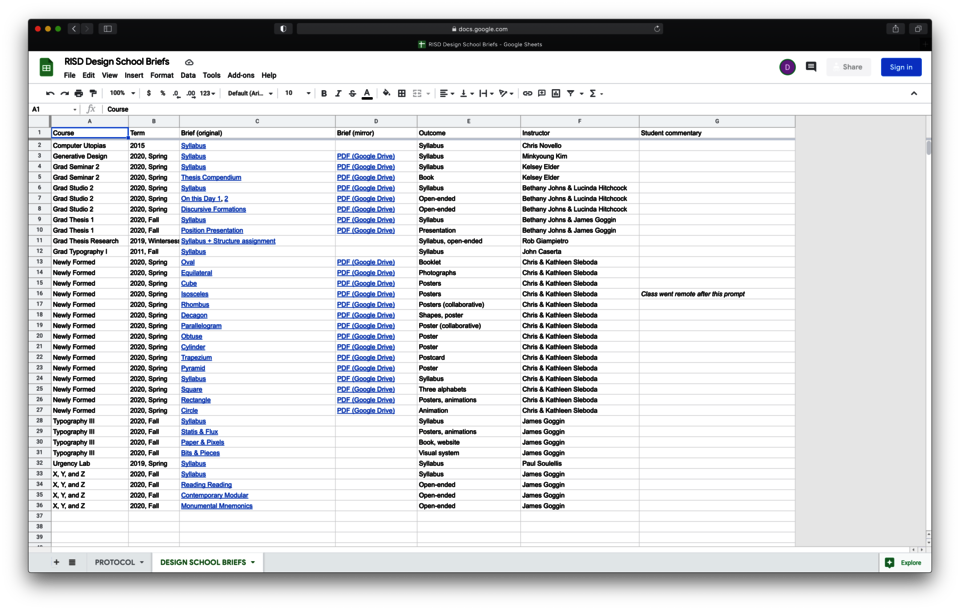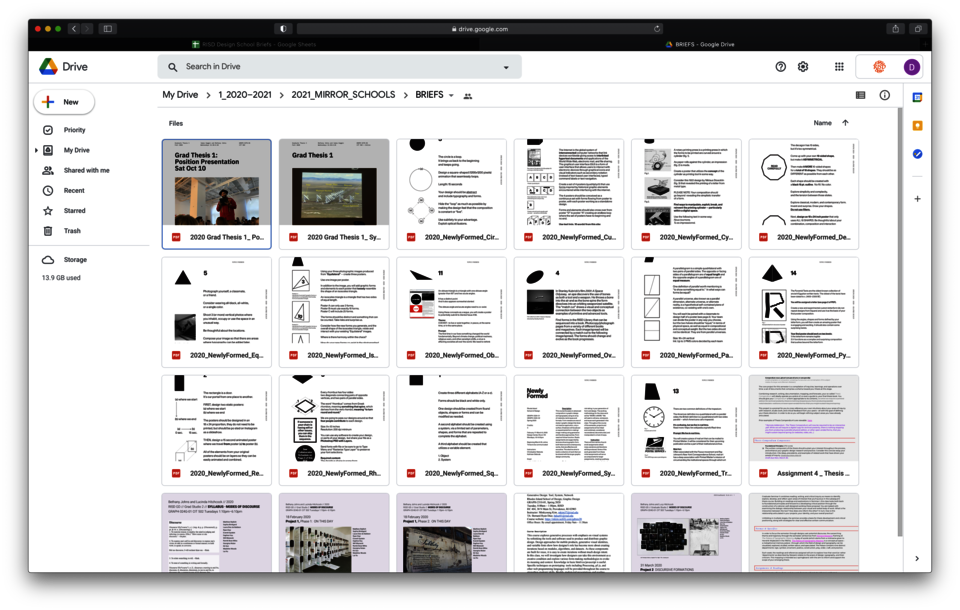ABSTRACT
Refiguring Relations sets conditions for interdependence and visualizes the affective relationships that people have with one another. Through scripts and participatory experiences, my work explores, challenges, and formulates expressions of collaboration. I extend spaces of overlap between individuals to encourage connection and alliance building, however temporary, slow, or small. In reading experiences, both print and digital, models of circulation and accessibility allow the audience to see and affect each others’ interactions. This thesis assembles methodologies and blueprints for reciprocal engagement, between designer and collaborators, designer and participants, and among participants themselves.
Providence River Scavenger Hunt
Two booklets, bound together by string
2021
Two booklets containing prompts encouraging close attention. The scavenger hunt is a game played by two people walking and working together. They are guided the booklets, which are saddle sewn together by colorful braided string with six feet of string between them. One page in one book will prompt, “Stop! Tell your partner all the noises you can hear.” The partner’s book on the same page reads, “Stop! Take down all the noises that your partner hears.” One partner does the noticing, while the other takes it all down. Then they switch roles with the next prompt, sharing back-and-forth.
A Book That Grows
Series of readers
2020
“How to succeed in making a rose that is not my rose, nor his rose, but everybody’s rose, i.e. nobody’s rose?
By placing it within a sequential structure (for example a book), so that it momentarily ceases being a rose and becomes essentially an element of the structure.”
— Ulises Carrión, “The New Art of Making Books”
A Book That Grows is a series of publications that stretches the book as a medium, where not only does narrative influence the act of reading, but so does the binding and folding of the pages. How the reader turns a page is as much a part of the narrative as the text itself. Revolving around a theme, each book compiles excerpts from published texts, like a mixtape or a song that built around samples. A reader can start reading a book at any point and jump around, building their own reading experience.
Reading is a social experience — not only an exchange between the text and the reader, but also a conversation among readers. These books take up little space and are meant to be shared and mailed. Distribution is modeled after the potluck-style of zine sharing. Additionally, anyone with access to a printer can replicate a book true to size: the pages of each book can all be printed on 8.5 by 11-inch paper (computer paper size) and folded down.
Submersion Reader
Can the physical interaction with a book feel meditative, even transportive? In this book, two texts play off each other within the pages: in one, “What We Think About When We're Swimming” by writer Bonnie Tsui, the act of swimming laps induces the feeling of traveling through portals; the portals transport the reader to the disorienting and floating feeling of vertical perspective, as detailed by artist and theoretician Hito Steyerl in “In Free Fall: A Thought Experiment on Vertical Perspective.” These are contained within three books bound together by spiral coils. The type swims back and forth on the pages. The reader methodically flips through the pages of each spiral-bound book to read one text, then flips the book over and rotates it 180° to read the other text. The effect of the page’s stepped color gradient intensifies and de-saturates on and on as the reader goes deeper into the text, then swims back out.
Garden Reader
Planting is a transformative process. Upon first encounter, the book offers simple instructions on how to grow the seeds. Within the pages are other nested messages: the pages are folded at the top, leading the unbound side and the bottom open. Hidden within the folds are more texts. In one fold, director Agnes Varda speaks about the beauty of watching tulips grow and decay. In another, Robin Wall Kimmerer traces her understanding of reciprocity back to observing the life cycles of strawberries. To tear open the pages is to discover a rich repository of writing offering thoughts cultivation and reciprocity. The act of tearing initiates the transformation of the book. Because the book contains more paper than one person may need for a small garden, the book should be shared.
Commonplace
Website
2020
- A shared reading experience on the internet
- Themed collections as offerings
- Texts sequenced together like a mixtape
Commonplace began as A Book That Grows, a series of print readers that treat the book as a democratic object and shareable form. In printed form, the readers look completely different from each other as objects unto themselves. The idea of putting these readers onto the internet initially came about as a way to bring them all together. As books meant to be reproducible by anyone with a printer, the reader files can be hosted on the internet to download, print, and share.
Because each physical reader is meant to be encountered in organic and unexpected ways — shared between two people, mailed as a gift, found in a public space — the website form should similarly be relational and variable. It exists conditionally on the peer-to-peer web, where the idea of a shared reading experience is inherent.
The current iteration of Commonplace — Reader 1 — Meditations on Wildflowers explores growth, reciprocity, decay, and memory through a field of ASCII flowers on screen. In digital and physical forms (Garden Reader), readers interact with the text, either revealing or transforming the contents through click and touch. For all versions of Commonplace, the presence and actions of readers on the site is noted, whether through a number counter, record of interactions that change the reading experience, or textual contributions.
Protocol, shared spreadsheet
2021
- A protocol for finding and collecting the syllabi and project briefs for university-level graphic design courses posted online (can also use for other disciplines)
- A publicly editable Google Sheets document with a growing list of RISD graphic design courses with their corresponding syllabi and project briefs, all found online
- A back-up collection of these documents in PDF form stored on Google Drive
- A possible starting point for someone who wants to curate their own design education
- A resource for an instructor pulling together their own syllabus
- An archive of classes for future students to refer to in order to understand the arc of their own education
- An unofficial archive on shaky ground, supported by a set of search instructions that can reinstate it in a new form if it ever disappears

